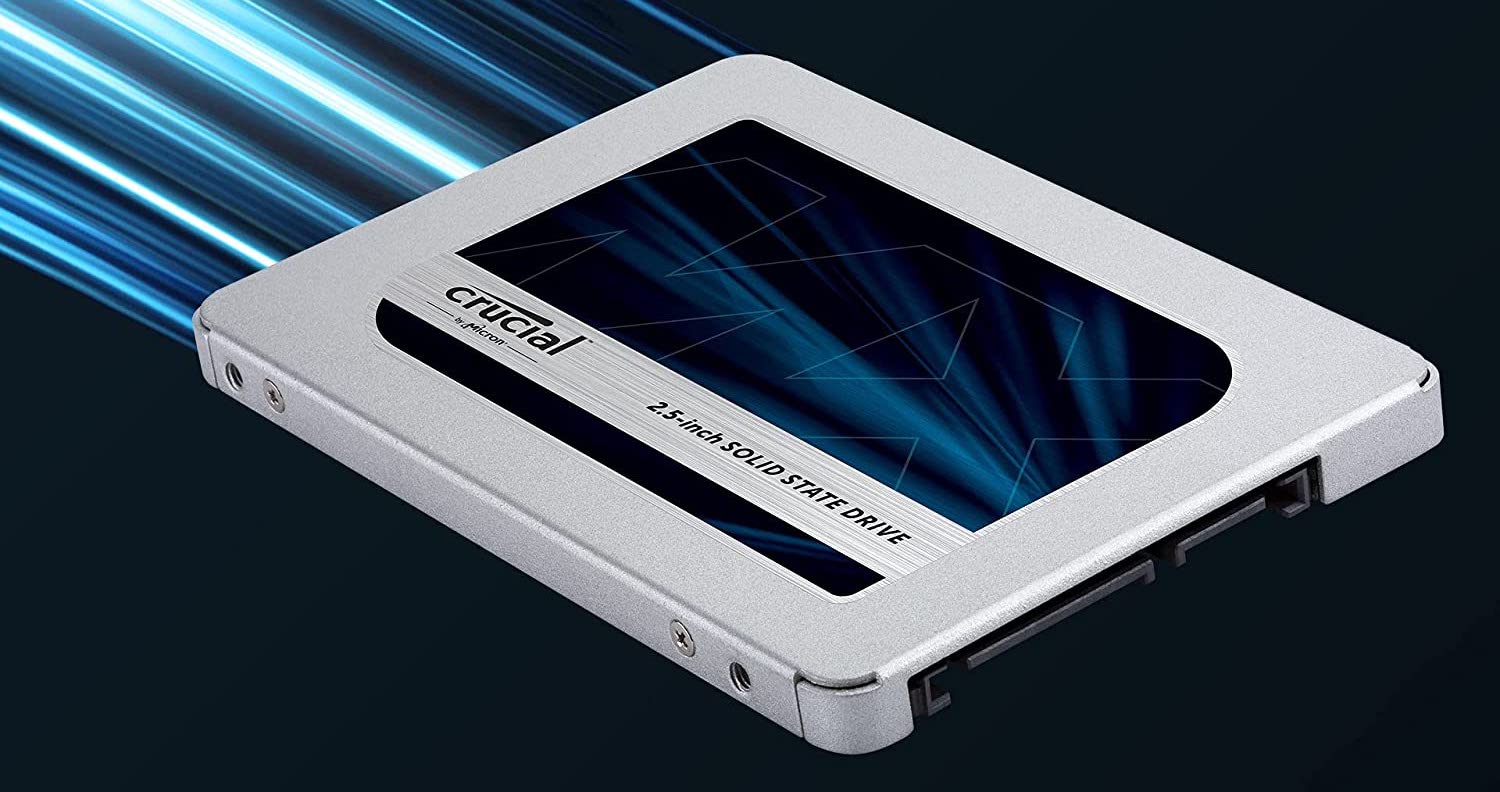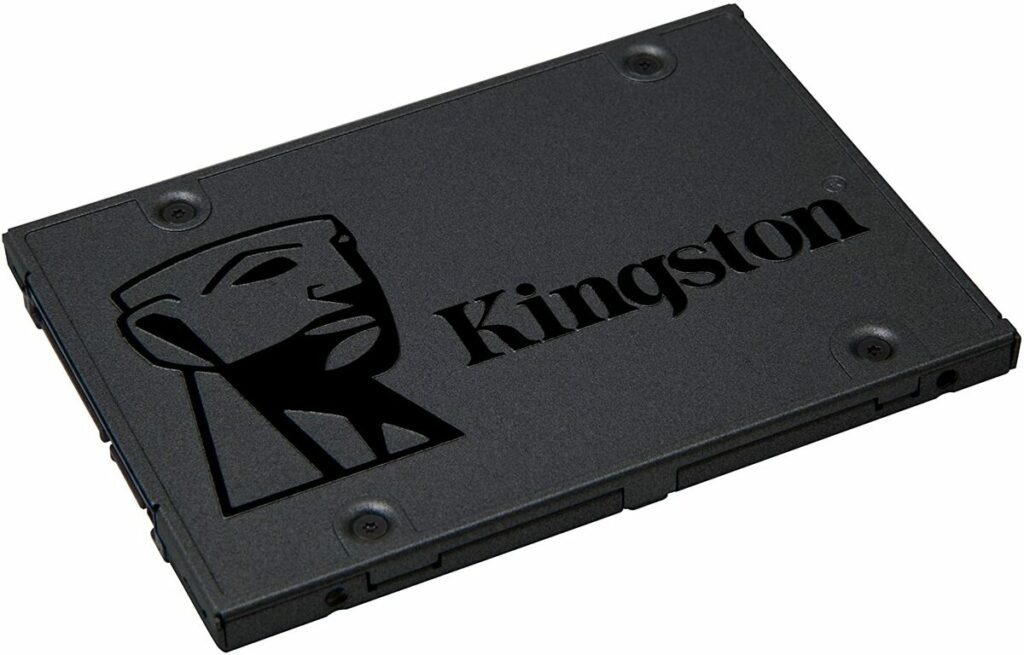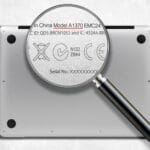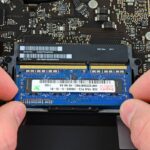The arrival of solid state hard drives They have allowed portable equipment to gain mobility and reduce the dimensions of the case. In addition, they have brought a much higher access speed than traditional HDDs. With them you will get a very fast start and you will notice a notable increase in the load of programs and files. If you want one of these SSDs for your laptop, first you would have to take into account a series of considerations ...
Guide Index
What is an SSD disk
Un SSD (Solid State Drive) It is a storage unit that came to replace and improve some of the features of conventional HDDs. These new units do not have mechanical parts, so reliability is gained. In addition, they do not work with recording heads and magnetic platters, but instead store the information in non-volatile memory chips, such as flash.
Inside the SSD you will find two slopes what you should know:
3 ”SATA2.5 SSD
These were the most common at first, with dimensions of two and a half inches, although little by little they have been displaced by the smaller form factors. This type of solid state hard drive is similar to M.2 in the way it stores information, but they are based on the SATA3 bus, so you will be limited by their bandwidth. The SATA3 is limited to 750 MB / s of real speed (or 6 Gb / s), so, no matter how high the accesses are, they will be throttled by that bandwidth.
PCIe-based M.2
These are presented on an M.2 card, which has very small dimensions, with a width that is always 22 mm and with 5 possible standardized lengths (30, 42, 60, 80 and 110 mm). But the most relevant feature is not in its small size, but in the speed at which it can go. As they are supported by a PCI Express bus, they can go beyond the SATA3 limit. For example, PCIe 4.0 can reach transfer speeds of 16 GB / s, or what is the same, 15,8 Gb / s per lane, that is, 1,969 MB / s. As it is common to have x2 or x4 lane connections, the maximum speed they get would be double or quadruple that, which is really impressive. To that is added that the latency and access speed is also amazing ...
Although there are other factors shape and typesThese two are the most common and the ones that you will always find on home PCs.
How do I know if I can install an SSD in my laptop?

At this point, if you want install an SSD In your laptop the first thing is to make sure that you can install this type of storage media. To be sure, check:
- If your laptop has a HDD as primary hard drivethen it will have a SATA3 interface. In that case you must replace the HDD with a SATA3 SSD to be compatible. These hard drives do not have as many advantages as the M.2 ones, in spite of that they will suppose a great jump in terms of speed.
- If your laptop has a Primary SSD already installed, then you will have to determine if it is a SATA3 or if it is an M.2. In this case you can replace your previous SSD with a similar one, although it may be of greater capacity.
- If your laptop has a M.2 SSD as primary and a SATA3 HDD as secondary drive For data, you could replace the primary SSD with another of the same format, or improve the speed of the secondary one by replacing the SATA3 HDD with a SATA3 SSD.
- If your laptop has multiple M.2 slots, then you can install a second secondary SSD of that format for data.
- Si you do not know what you have or you are not very sure, read the next section ...
How to know which laptop SSD to buy

To choose the new SSD that you can install in your case, you should take into account the following specs and know how you can check which ones affect your laptop:
- Features that influence compatibility:
- Interface: if you are going to replace one hard drive with another, either primary or secondary, it will always have to match the same interface as the previous one you had to be compatible. That is, if you had a SATA3 you should choose a SATA3, on the other hand, if it is an M.2 it should be M.2. There are M.2 to SATA3 converters, but I do not recommend it, as it will be an additional expense and will continue to be limited by SATA3.
- Form factor: if your previous hard drive was a SATA3, then it must have dimensions of 2.5 ", so you will have to purchase an SSD with those dimensions. On the other hand, if it was an M.2 SSD, you will have to choose one of these cards. In short, always the same to be compatible.
- Features that do not influence compatibility:
- Capacity- Capacity does not affect compatibility, there may be limitations due to the operating system / file system, but generally if you have a current system there should not be. That is, if you have a 120 GB SSD or HDD, you could replace it with another of any capacity, be it smaller or larger.
- Brand and model: the make and model do not influence either. This means that if your hard drive is a Seagate you don't have to choose a Seagate for the new one, it can be a Western Digital, Samsung, or whatever you want. As long as it respects the form factor and interface, it will be compatible.
How to know the characteristics of my current hard drive

Now, once we know what influences and what does not influence compatibility, the following is to know how you can know those characteristics of your current hard drive to guide you in the purchase of the new unit:
How to know which interface my current hard drive uses
On windows: you can open the System Information application> Components> Storage> Disks. You can also go to Device Manager> Disk drives, and there see if it is an ATA / SATA, etc.
- On GNU / Linux: You can use several methods, for example with the following commands executed without quotes “sudo hdparm -I /dev / sda " (in this case you have to replace / dev / sda with the name of the unit you want to check), or "lshw -class disk -class storage", etc. Another way is to use graphical apps like GNOME Disks (gnome-disks).
- On macOS: go to the Disk Utility app> View> Show all devices> Select the item in the sidebar you want to get information about> Click the information button (i) on the toolbar.
- Other methods: other methods go through third-party apps, such as AIDA64, Hardinfo, CristalDiskInfo, etc., which provide detailed hardware information. You can also choose to look in the manual for your laptop model or in the technical specifications. If you can't handle any of the above methods, the other alternative is to open your laptop and look at it for yourself.
How to know what format is my current hard drive:
- On windows: you can open the System Information application> Components> Storage> Disks. You can also go to Device Manager> Disk drives, and there see if it is an ATA it will be a 2.5 ”, or if it is the PCIe / M.2
- On GNU / Linux: You can use several methods, for example with the following commands executed without quotes “sudo hdparm -I /dev / sda " (in this case you have to replace / dev / sda with the name of the unit you want to check), or "lshw -class disk -class storage", etc. Another way is to use graphical apps like GNOME Disks (gnome-disks).
- On macOS: go to the Disk Utility app> View> Show all devices> Select the item in the sidebar you want to get information about> Click the information button (i) on the toolbar.
- Other methods: other methods go through third-party apps, such as AIDA64, Hardinfo, CristalDiskInfo, etc., which provide detailed hardware information. You can also choose to look in the manual for your laptop model or in the technical specifications. If you cannot with any of the above methods, the other alternative is to open your laptop and check if it is a small electronic card (M.2) or if it is a 2.5 ”unit.

How to know the capacity of my current hard drive
- On windows: the simplest thing is to go to Configuration> System> and there check the capacity of the C: drive, which will be the primary hard disk. You will also be able to see the capacity if there is more than one drive, such as D :, etc.
- On GNU / Linux: You can use several methods, for example with the following commands executed without quotes “sudo hdparm -I /dev / sda " (in this case you have to replace / dev / sda with the name of the unit you want to check), or "lshw -class disk -class storage", etc. Another way is to use graphical apps like GNOME Disks (gnome-disks).
- On macOS: go to the Disk Utility app> View> Show all devices> Select the item in the sidebar you want to get information about> Click the information button (i) on the toolbar.
- Other methods: other methods go through third-party apps, such as AIDA64, Hardinfo, CristalDiskInfo, etc., which provide detailed hardware information. You can also choose to look in the manual for your laptop model or in the technical specifications. If you cannot with any of the above methods, the other alternative is to open your laptop and look at the label of the hard disk where the capacity is detailed.
How to know the make and model of my current hard drive:
- On windows: you can open the System Information application> Components> Storage> Disks. You can also go to Device Manager> Disk drives, and there you will see the make and model of the disk drive / s you have.
- On GNU / Linux: You can use several methods, for example with the following commands executed without quotes “sudo hdparm -I /dev / sda " (in this case you have to replace / dev / sda with the name of the unit you want to check), or "lshw -class disk -class storage", etc. Another way is to use graphical apps like GNOME Disks (gnome-disks).
- On macOS: go to the Disk Utility app> View> Show all devices> Select the item in the sidebar you want to get information about> Click the information button (i) on the toolbar.
- Other methods: other methods go through third-party apps, such as AIDA64, Hardinfo, CristalDiskInfo, etc., which provide detailed hardware information. You can also choose to look in the manual for your laptop model or in the technical specifications. If you cannot with any of the previous methods, the other alternative is to open your laptop and look at the label where the brand and model appears.
Now, with the information you have obtained, you will be able to determine what hard drive can you buy to be compatible ...
Advantages of an SSD versus a HDD
The advantages of these SSD drives mainly lie in the access speed (read and write), since they are higher than those of an HDD. The advantage is that to access the data you can work with electrical signals, similar to how it is done in RAM. On the other hand, in an HDD it is necessary to move the head to the reading areas where the die is located and the reading is not so fast.
To get an idea, a NVMe PCIe SSD it could do a read access in as little as 110.000 ns (0.11 ms) while an HDD drive would do it in about 5-8 ms. And if that seems little to you, other figures of the HDD vs SSD comparison will also surprise you:
- An SSD can reach 6000 I / O operations per second, compared to 400 for HDDs. This means that the SSD is x15 times faster.
- The failure rate of the SSD, despite having a bad press at first, is only 0.5% or less, while the failure of the HDD is 2-5%, that means up to 10 times less failures in the SSD .
- While SSDs consume between 2-5W, HDDs consume 6-16W. This means that you will save on power with an SSD and it will generate less heat.
- Backups to an SSD can take up to 6 hours, depending on capacity. On an HDD it could take up to 24 hours. That means a backup is up to 5 times faster on the SSD.
Another of the great advantages is usually the dimensions which occupies an SSD versus a HDD. To house the different dishes, the spaces between them, the heads, the motor, etc., the HDDs have a higher volume. In contrast, SSDs are just a PCB with a few chips.
Is it easy to install an SSD to the laptop?
Yes, it is very simple. The most tedious thing will be to open the laptop for installation. But once you have accessed the place where the hard drive is installed, the installation procedure is extremely simple. The generic steps outlined are:
- The first thing is to remove the battery and disconnect the adapter from the power to avoid incidents.
- Open your laptop and access the place where the hard drive is housed. Generally it is easy to locate them, but if you are somewhat lost you can consult some technical guides that are available for your specific model on the website of your laptop manufacturer.
- Remove the old unit (if there is no free connector):
- If it is a HDD, it will be protected with a metal armor and a screw. You just have to remove the screw to loosen it and move the disk so that it disconnects from the SATA and power connector.
- In the case of being an M.2, then you must remove the screw that keeps it in a horizontal position and you will be able to raise it slightly to remove it from the slot.
- The following is to put the new SSD hard drive:
- In case of being SATA, you just have to insert the new SSD in the armor, connect to the SATA / power port, and screw back.
- If it is an M.2, then click the card in the slot. You will see that it has a grimace, so it can only be inserted one way. Once punctured, put it horizontally and tighten the screw.
- For empty bays or slots, it will simply be to install the new SSD following the same steps above.
- Now it would be a matter of closing the equipment again, without forgetting to connect components or cables that you had to remove when you opened your laptop. And once closed, you will be able to boot and begin with the formatting of the new unit to give it a format and start using it if it is the secondary one, or install an operating system in it in the case that it is the primary one ...
Is it worth putting an SSD to a laptop with HDD?
In short, the new SSD drives offer some great advantages in front of the HDD and are very easy to install. You will win in silence, since they do not emit noise, in temperature dissipation, in the electricity bill and, especially, in startup and load speed.
The SSD only has Some disadvantages that you should consider whether or not they are worth it in your case:
- Higher price. As they are more advanced and new units, their price is higher than an HDD in equal capacity.
- Capacity is another point to consider, as SSDs lag behind HDDs. While there are already HDDs with capacities of 16 TB or more, SSDs are still going for capacities of about 8 TB and moving forward ...
- Some units are based on NAND flash cells, they usually have a maximum write cycle, and at that point they could stop working, although this can be after years of use ... HDDs in that sense are somewhat more durable if none of them are damaged. its mechanical parts, as they are more likely to fail. However, some modern SSD DRAM cells do not have these limitations and their life is very long, although their price is also higher.
Telecommunications Engineer closely linked to the world of computing. I complement my daily work with a suitable laptop for my tasks and I help you to achieve the same adapted to your needs.











